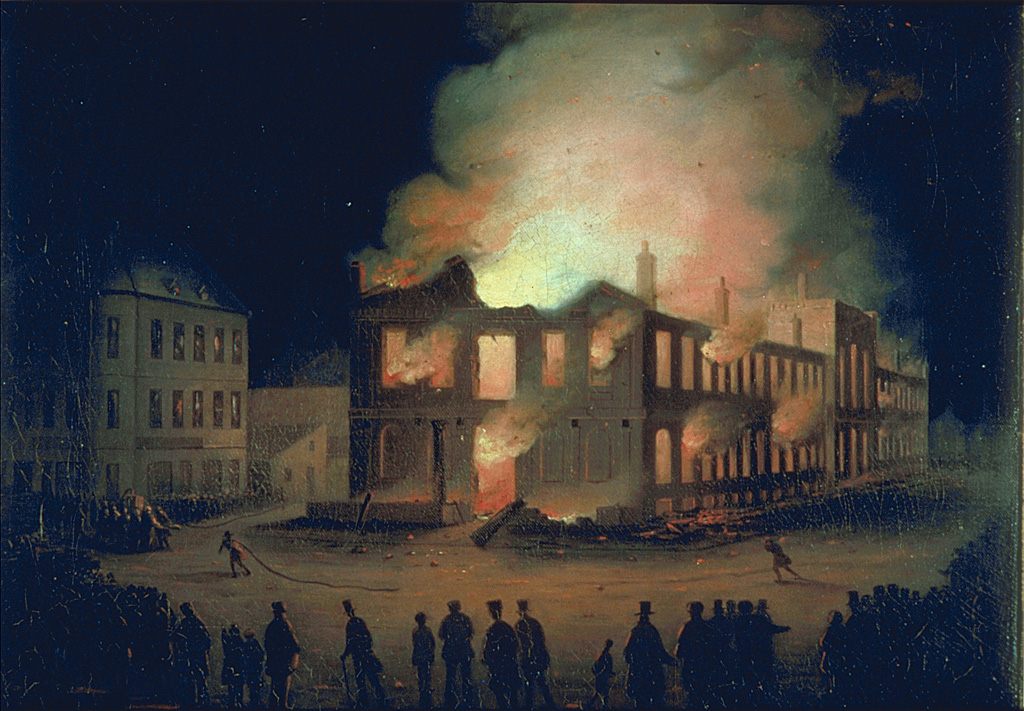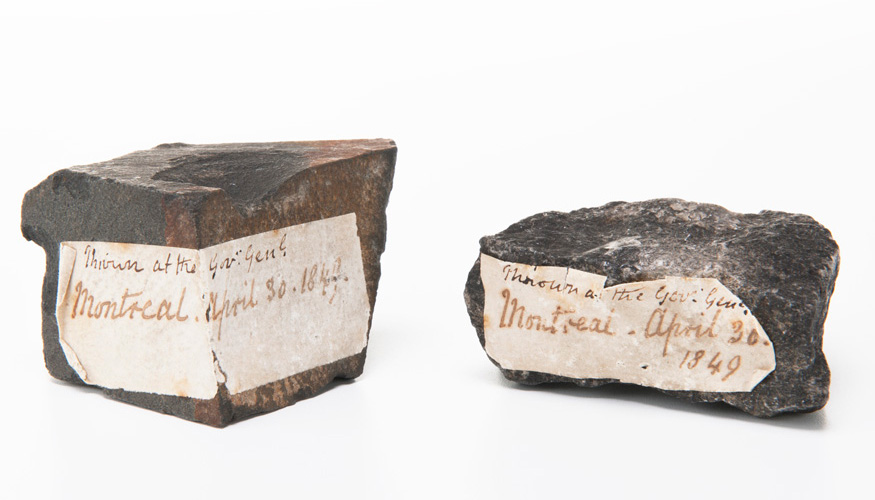A Burning Question

Illustration of burning Parliament building
©McCord Museum, The Burning of the Parliament Building in Montréal, Joseph Légaré, about 1849, M11588
Montréal. April 25, 1849. An enraged mob approaches the Parliament building of the Province of Canada (present-day southern Ontario and southern Quebec).
Incited by Montréal’s English newspapers, the politically conservative Anglophone mob is bent on revenge for what it sees as an act of treachery. The Governor General, Lord Elgin, has just given royal assent to the Rebellion Losses Bill, which will indemnify Francophones for property losses during the ill-fated 1837 rebellion against British rule. The aim of the Reformers who put the Bill forward was to compensate innocent bystanders. In the eyes of the mob, however, Lord Elgin is agreeing to reward traitors. Earlier this day, they had pelted his carriage with cobblestones and rotten eggs.
Reaching Parliament at dusk, the mob throws rocks at the building, shattering its windows. The mob then streams inside to destroy the chambers. It retreats — but only to set the building on fire. The violence persists for a few days.

These cobblestones were among those thrown at Lord Elgin on April 30, as the riots continued. Lady Elgin, his wife, gathered and labelled the stones, which were thereafter kept as family heirlooms.
©Canadian Museum of History, 2008.118.3, 2008.118.4, photo Steven Darby, IMG2014-0156-0010-Dm
A Setback — But Not a Loss
Lord Elgin’s willingness to allow the Rebellion Losses Bill to pass, in spite of the violent opposition of powerful segments of the population, was Canada’s first experience of responsible government — power residing not with Britain but with the majority in an elected Canadian Parliament.
The Montréal riots expressed the views of a minority. These were reform-minded times, and responsible government, which had long been a core principle of government in Great Britain, was popular with British North Americans. In Nova Scotia, reformers had in fact obtained responsible government shortly before. They had done so without “a blow struck or a pane of glass broken,” as one of their leaders, Joseph Howe, proudly put it. Within six years, the lieutenant-governors of Britain’s other North American colonies had followed Lord Elgin’s lead, paving the way to Confederation.
This is just one of the many compelling stories you’ll encounter at the Museum’s ongoing exhibition 1867 – Rebellion and Confederation.